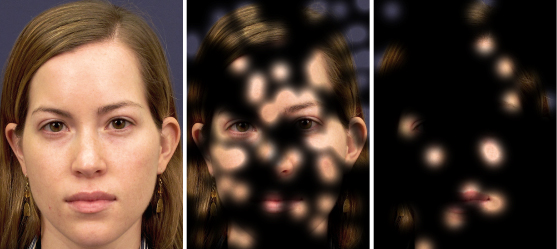Brain Cells Prefer Whole Faces

For the first time, scientists have documented how brain cells respond strongly to an entire face, but issue a weaker response when a small part of the face is not visible.
The researchers believe this phenomenon, which they recorded in a part of the brain known as the amygdala, could play a role in how we recognize faces.
"Our interpretation of this initially puzzling effect is that the brain cares about representing the entire face, and needs to be highly sensitive to anything wrong with the face, like a part missing," said Ralph Adolphs, senior author of the study and a researcher at the California Institute of Technology. "This is probably an important mechanism to ensure that we do not mistake one person for another and to help us keep track of many individuals."
Counterintuitively, the team found that the neurons became less responsive when more of the partially obscured face was shown.
The amygdala is an area of the brain linked with emotions, including fear. But scientists are coming to suspect that it plays a role in handling social stimuli, including faces.
The study participants were epilepsy patients who had had electrodes implanted in their medial temporal lobes —the location of the amygdalae —in preparation for surgery. The researchers used the electrodes to observe individual neurons' responses when the patients saw a face, either whole or partially obscured.
The research appeared online in the journal Current Biology on Sept. 29.
Sign up for the Live Science daily newsletter now
Get the world’s most fascinating discoveries delivered straight to your inbox.
You can follow Live Science writer Wynne Parry on Twitter @Wynne_Parry. Follow LiveScience for the latest in science news and discoveries on Twitter @livescience and on Facebook.











